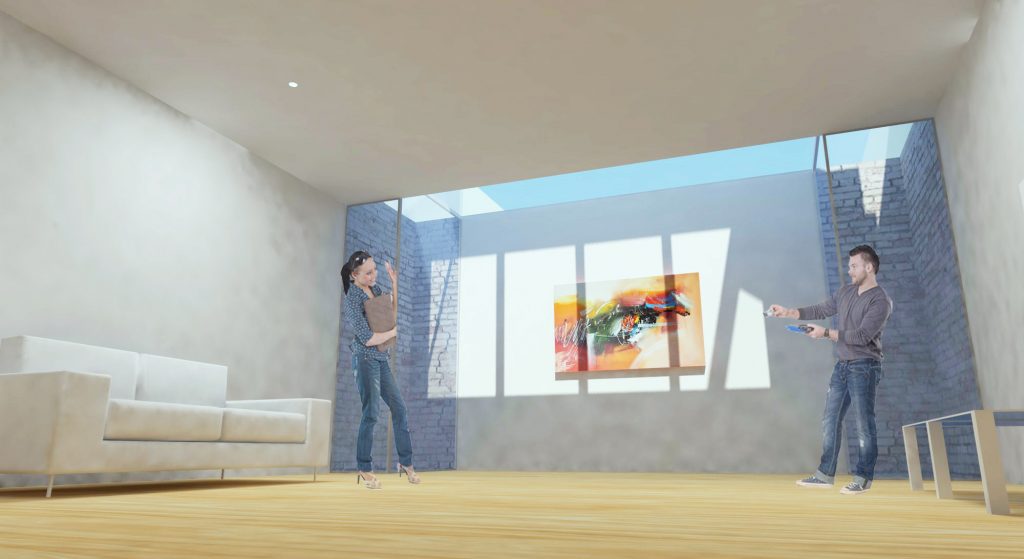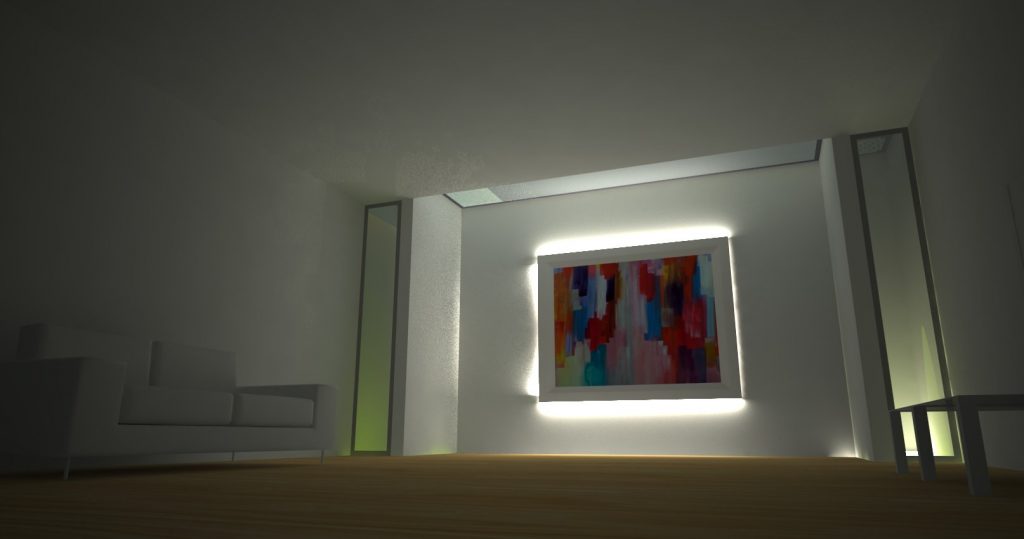Amongst our portfolio of fifteen basement extensions in Fulham, this project in Inglethorpe Street is distinct in its design. Its difference lies in the way in which space that is usually given over to the rear lightwell is in this instance used as internal space to increase the basement footprint. This alteration creates a distinct feature within the basement.
In a striking way, the issues of natural light and ventilation are dealt with through openable glazed elements. The basement extension thus benefits from a dramatic focal point and an increase in floor area.
Two glass tubes provide light and natural ventilation into the basement. These glass tubes contain a pivoting element that will open one glass panel, and provide natural ventilation. A glass platform sits over the pace and floods it with natural light. The glass platform is designed and detailed to link with both glass tubes. An elegant form, the high-quality glazed elements are a well-composed feature within the basement room. The impact of the glass tubes at night is also impressive with a series of hidden light sources turning them into light tubes.
The external lightwell giving onto the garden and linking the basement to the outside is an important feature of basement design. Our various basement extensions in Fulham have addressed this design issue in a wide variety of ways. The key components are the incorporation a stair up from the lightwell to the garden level and the nature of the bridge or platform over the lightwell linking the ground floor with the outside and then further how all these elements are designed to work together.
Another one of our basement extensions in Fulham, within the ‘Alphabet Streets’, Inglethorpe Street has an elegant stair with glass balustrade. A glass bridge at ground floor incorporates with the rear glazed sliding door configuration, allowing the kitchen to open fully up onto the garden. The success of this was the simple detailing and the use of a limited palette of high-quality materials. In the development of the design, 3D computer visualisations were used to model the effect of daylight and were used to communicate proposals clearly with our client and other members of the design team.
In other basement extensions in Fulham, there has been a greater degree of glass covering the lightwell void. In these cases at the edges, a zone of steel grille is used to allow natural ventilation to space below. With the installation of a glass bridge, the type of finish is offered to the client. In this case, the client was keen to go with a clear and translucent glazed element; on several projects the finish choice has been semi-opaque or a mixture of etched stripes and transparent stripes.
Within the lightwell itself, as it is a small space, the finish to the walls is crucial. We have, on various London basement extensions, used several mirrors as a finish which gives many interesting effects. Using mirrors in a confined area helps draw light into the central basement family space (See The Queensmill Road project). Painted render is a more common choice but has to be detailed correctly in that the render terminates on a bell mouth drip, and the contractor should lift the render above the ‘splash zone’ at the bottom of the wall. Other approaches include using tiles of various proportion and texture, or a planting mesh that integrates with the balustrade at garden level. Concrete itself, when poured as a ‘fair faced’ finish, is an elegant and robust surface that works well with glass in composition. We have investigated and used all these approaches in our basement projects in Fulham and London basements in many other boroughs. It is this breadth of experience in designing basement extensions that we feel benefits each new project that the practice takes on.




